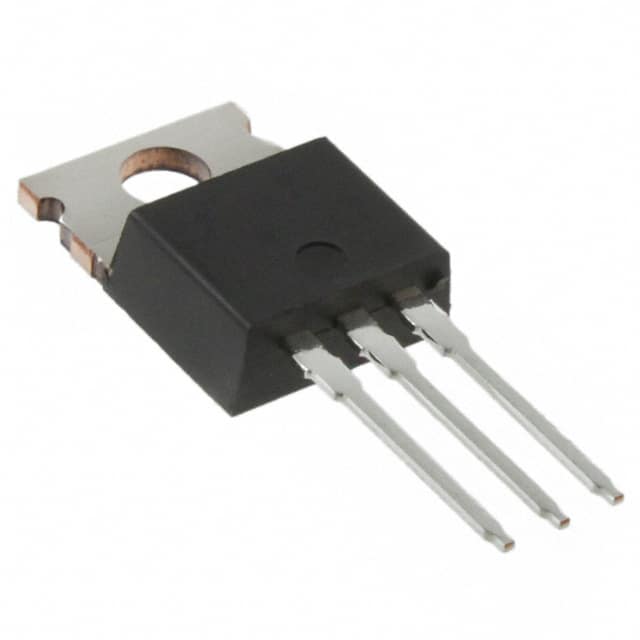IRF530
Product Overview
Category: Power MOSFET
Use: Switching applications
Characteristics: High voltage, high speed switching
Package: TO-220
Essence: Power transistor for electronic circuits
Packaging/Quantity: Typically sold in packs of 10
Specifications
- Voltage Rating: 100V
- Continuous Drain Current: 14A
- RDS(ON): 0.16 ohms
- Gate Threshold Voltage: 2V to 4V
- Power Dissipation: 75W
Detailed Pin Configuration
The IRF530 has three pins: 1. Gate (G) 2. Drain (D) 3. Source (S)
Functional Features
- Fast switching speed
- Low on-resistance
- High input impedance
Advantages and Disadvantages
Advantages: - High voltage capability - Low gate drive power required - Good thermal stability
Disadvantages: - Relatively high gate threshold voltage - Susceptible to damage from static electricity
Working Principles
The IRF530 operates based on the principle of field-effect transistors, where the flow of current between the drain and source is controlled by the voltage applied to the gate.
Detailed Application Field Plans
The IRF530 is commonly used in the following applications: - Switch mode power supplies - DC-DC converters - Motor control circuits - Audio amplifiers
Detailed and Complete Alternative Models
Some alternative models to the IRF530 include: - IRF540 - IRF520 - IRF510 - IRF3205
This information provides a comprehensive overview of the IRF530, covering its category, use, characteristics, package, specifications, pin configuration, functional features, advantages and disadvantages, working principles, application field plans, and alternative models.
Lista 10 Vanliga frågor och svar relaterade till tillämpningen av IRF530 i tekniska lösningar
What is the IRF530 transistor used for?
- The IRF530 is a power MOSFET transistor commonly used in electronic circuits to switch high-power loads such as motors, solenoids, and lamps.
What are the key specifications of the IRF530 transistor?
- The IRF530 has a maximum drain-source voltage (Vds) of 100V, continuous drain current (Id) of 14A, and low on-resistance for efficient switching.
How do I connect the IRF530 in a circuit?
- The IRF530 is typically connected in series with a load, with the gate terminal driven by a suitable voltage source through a current-limiting resistor.
Can the IRF530 be used for PWM (Pulse Width Modulation) applications?
- Yes, the IRF530 is suitable for PWM applications due to its fast switching characteristics and low on-resistance.
What are the typical applications of the IRF530?
- The IRF530 is commonly used in motor control, power supply circuits, DC-DC converters, and other high-power switching applications.
How do I calculate the power dissipation in the IRF530?
- The power dissipation can be calculated using the formula P = I^2 * Rds(on), where I is the drain current and Rds(on) is the on-resistance of the transistor.
What precautions should be taken when using the IRF530?
- It is important to ensure proper heat sinking for the IRF530 to prevent overheating, and to avoid exceeding the maximum Vds and Id ratings.
Can the IRF530 be used in automotive applications?
- Yes, the IRF530 is suitable for automotive applications such as motor control and lighting systems, provided it meets the required specifications.
What are the alternatives to the IRF530 transistor?
- Alternatives to the IRF530 include similar power MOSFETs such as IRF540, IRF520, and other transistors with comparable specifications.
Where can I find the datasheet for the IRF530?
- The datasheet for the IRF530 can be found on the manufacturer's website or through electronic component distributors.


